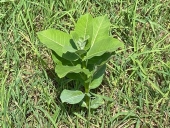




 2
2











 3
3




 4
4




Idle dreamer




 2
2




 1
1




Sometimes the answer is nothing





 2
2




The effects of an auxin herbicide, 2,4-D, at a concentration of 0.01 mM, on the K+ uptake and efflux of excised roots of wheat (Triticum aestivum L. cv. Rannaya) were investigated at different pH values. The K+ movement was monitored with a K+ (86Rb) tracer. In parallel experiments the ATPase activities of microsomal fractions were determined by the inorganic phosphate liberation method. 2,4-D inhibited the K+ uptake especially at low pH, irrespective of whether Ca2+ was present or not. No marked changes were observed in the K+ efflux properties at pH values above 4. The inhibitory effect on K+ uptake exhibited a correlation with the hydrocarbon solubility of the herbicide, but not with the 2,4-D-induced decrease of the ATPase activity. It is suggested that 2,4-D exerts a non-specific effect on the lipid-protein interactions, giving rise to a generalized alteration of the transport barrier properties of the plasma membrane even at as low a concentration as 0.01 mM.
















Other people may reject you but if you lie in the forest floor for long enough the moss and fungi will accept you as one of their own!

|
If you look closely at this tiny ad, you will see five bicycles and a naked woman:
Back the BEL - Invest in the Permaculture Bootcamp
https://permies.com/w/bel-fundraiser
|

